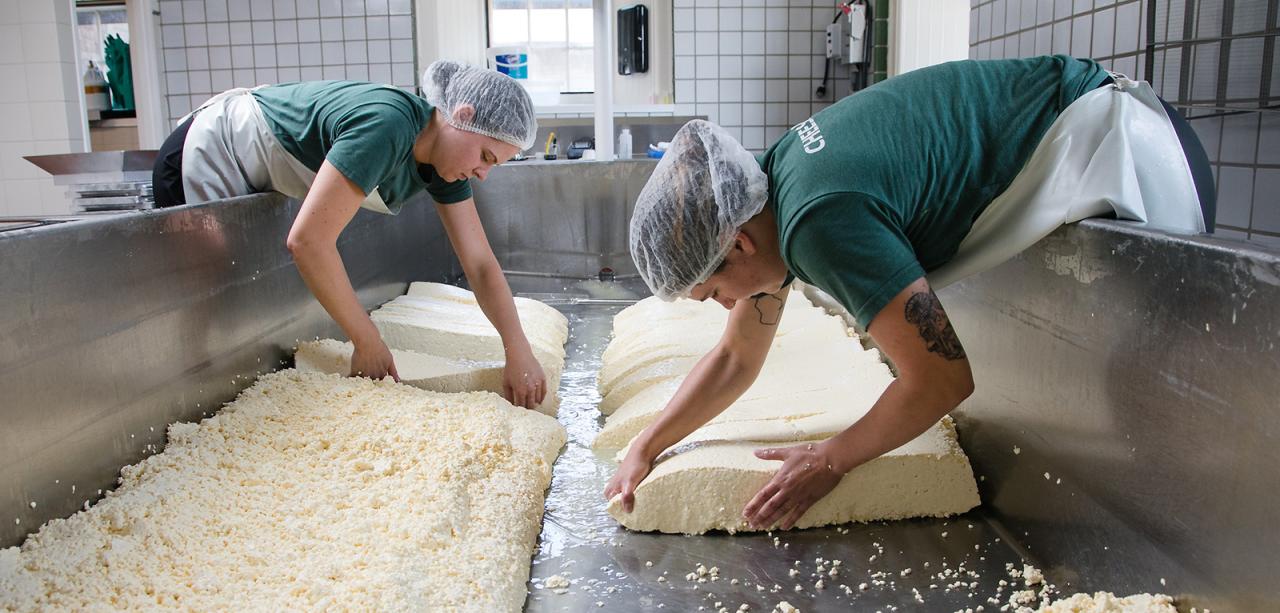Unlocking the Secrets of Artisanal Cheese Making: A Detailed Do It Yourself Guide
In the realm of cooking craftsmanship, artisanal cheese making stands as a testament to the fragile equilibrium between custom and technology. Each step in the procedure, from picking the right milk to improving aging strategies, holds within it a wealth of understanding passed down with generations. As we get started on this journey to demystify the art of producing elegant cheeses, we are encountered with a tapestry of skills and keys waiting to be unwinded. Join us as we check out the complexities of this ancient craft, where art, scientific research, and patience converge to generate tastes that tantalize the senses.
Selecting the Right Milk
When starting the trip of artisanal cheese making, the choice of milk plays a crucial role in establishing the high quality and qualities of the end product. The sort of milk picked impacts the flavor, texture, and generally profile of the cheese. Raw milk, directly from the animal, is preferred by numerous artisanal cheesemakers because of its distinct blend of enzymes, microorganisms, and flavor compounds. Using raw milk comes with regulations and dangers, making pasteurized milk a safer option for beginners.
Additionally, the resource of the milk, whether from cows, goats, lamb, or buffalo, contributes distinct flavors and attributes to the cheese. Each type of milk brings its very own subtleties, enabling for a wide array of cheese selections to be crafted based on the picked milk.
Culturing and Coagulating
To start the cheese-making process, the crucial steps of culturing and coagulating must be thoroughly executed to transform milk into curds and whey. Culturing involves introducing useful germs to the milk, which then begins the fermentation process. These bacteria transform lactose (milk sugar) into lactic acid, producing the acidic environment required for coagulation. The kind of culture used can considerably affect the flavor, appearance, and ripening of the last cheese product.

The timing and temperature level control during culturing and coagulation are essential aspects that affect the final end result of the cheese. Appropriate execution of these steps is important to make certain the preferred appearance, taste, and consistency of the artisanal cheese being produced.
Draining Pipes and Pressing Curds
After the milk healthy proteins have coagulated and the curds have been reduced to launch whey, the following critical action in artisanal cheese making includes draining and pushing the curds to accomplish the wanted structure and consistency of the final cheese product. Draining pipes is the procedure of separating the curds from the whey. This can be done by moving try this out the curds right into a cheesecloth-lined colander or mold and mildew and enabling the whey to drain pipes off naturally. The time for draining pipes can differ depending upon the sort of cheese being made and the more desired wetness web content.
When the curds have actually completely drained, the following action is pushing. Pressing aids eliminate any type of remaining whey and compacts the curds to form a strong cheese wheel. Pushing can be done making use of specialized cheese presses that apply regular and gentle pressure over a duration of time. The duration and stress used during pressing will affect the final appearance of the cheese, from soft and luscious to difficult and company. Correct draining pipes and pushing are important actions that substantially impact the high quality and characteristics of the artisanal cheese being generated.
Aging and Flavor Methods
Carrying out precise aging and flavoring strategies is critical in enhancing the deepness and intricacy of artisanal cheeses, boosting their preference profiles to beautiful levels of refinement and class. Aging plays an important role in creating the unique flavors and structures that identify artisanal cheeses. Throughout the aging process, cheeses are saved in thoroughly controlled settings where variables such as moisture, airflow, and temperature level are controlled to motivate the development of helpful mold and mildews and microorganisms. This regulated setting enables celebrity to grow gradually, establishing abundant flavors and complicated fragrances.
Flavoring methods additionally contribute dramatically to the last preference of artisanal cheeses. Cheesemakers might select to present extra tastes by incorporating ingredients such as herbs, spices, or also fruits into celebrity throughout the manufacturing process. Furthermore, some cheeses are washed or rubbed with various liquids, such as salt water or alcohol, to boost their textures and flavors.
Wrapping and Keeping Cheeses

Conclusion
In conclusion, mastering the art of artisanal cheese making involves very carefully selecting the right milk, following accurate culturing and coagulating procedures, draining pipes and pushing curds effectively, and utilizing numerous aging and flavor strategies. Remember to wrap and keep your cheeses effectively to make certain optimum flavor and structure growth.
Each type of milk brings its own subtleties, allowing for a vast variety of cheese selections to be crafted based on the selected milk.After the milk healthy proteins have coagulated and the curds have actually been cut to launch whey, the next crucial step in artisanal cheese making involves draining pipes and pushing the curds to attain the wanted structure and uniformity of the final cheese product. A lot of cheeses should be wrapped in wax paper or cheese paper to enable them to breathe while safeguarding them from drying out. For cheeses that need to proceed aging, such as bloomy rinds or cleaned rinds, guarantee they are kept in an awesome setting like a cheese cave or a refrigerator set to the suitable temperature. By paying interest to the wrapping and storage of artisanal cheeses, cheese makers and fanatics can protect the integrity of these delicacies and completely appreciate their intricate flavors.